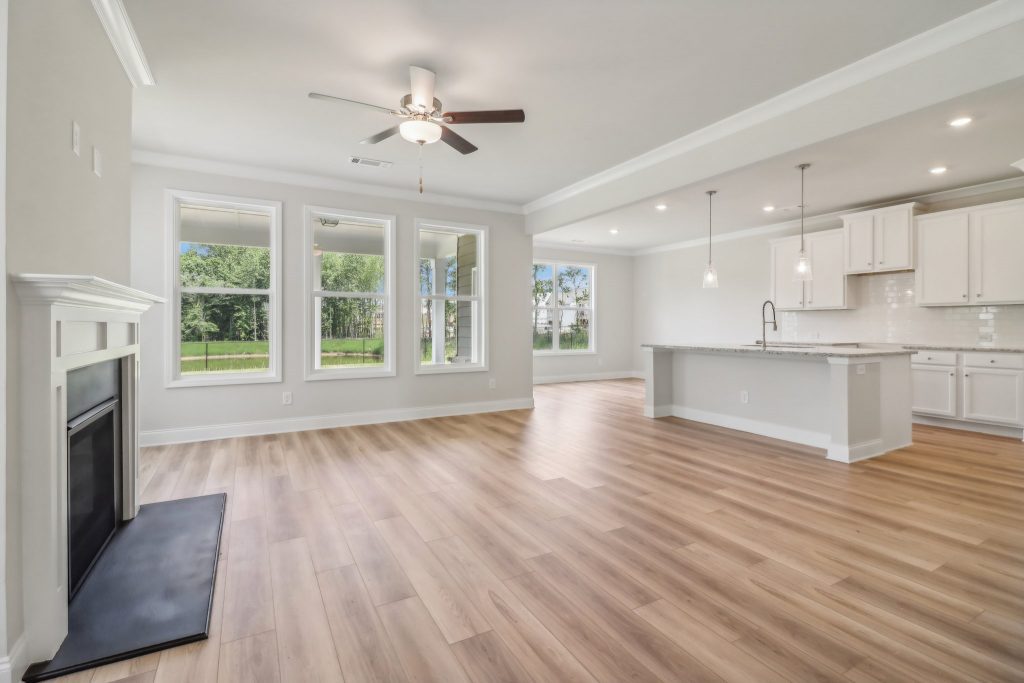
In recent years, open floor plans have become increasingly popular in new home construction and renovation projects. This design trend eliminates barriers between key living spaces, such as the kitchen, dining area, and living room, creating a seamless flow and a sense of spaciousness. However, like any architectural choice, open floor plans come with their own set of advantages and disadvantages. Let’s explore the pros and cons of choosing an open floor plan for your new home and determine if it is the right choice for you.
One of the primary benefits of an open floor plan is promoting social interaction. With fewer walls dividing spaces, family members and guests can easily engage in conversation and activities across different areas of the home. Conversations can be shared between those cooking in the kitchen, watching TV in the living room, and sitting at the dining table. This fosters a sense of togetherness and connectivity, particularly during gatherings and events. While hosting events, it allows everyone to be everywhere at once, without separation or feeling cramped in one space.
Open floor plans, without walls obstructing the flow of natural light, often allow for better light penetration throughout the home. Large windows can illuminate multiple areas, creating a bright and airy atmosphere. This not only enhances the aesthetic appeal of the space but also contributes to energy efficiency by reducing the need for artificial lighting during the day.
When you are proud of your home you want to show it off. With an open floor plan, you do not even have to take your guests on a full tour because all the beauty is visible at a glance. By eliminating visual barriers, open floor plans create a sense of continuity and cohesion within the home. This can make the space feel larger and more unified, enhancing the overall design aesthetics. It is like gaining more square footage without the price tag. From an architectural standpoint, open layouts can showcase the flow of lines and design elements, creating a visually appealing environment.
If you are a parent or guardian to young children an open floor plan may be appealing for its benefits in raising children in your home. When choosing a floor plan, it is helpful to consider your lifestyle from all angles. An open floor plan makes it much easier to keep an eye on children while still giving them some freedom and independence. You do no have to worry about keeping them right by your side while preparing dinner or anything else on the main floor because it is almost like the whole floor is one big room. However, you know that they are safe and you are just a few steps away.
While open floor plans promote connectivity, they can also compromise privacy, especially in multi-functional spaces like the living room or kitchen. Some people prefer to have a separation between the kitchen, dining area, and relaxation space. Having designated locations can promote a sense of coziness, and it allows you to create a different culture in each room. It also permits members of the household to do their own thing and not necessarily be social all the time.
Without those extra walls, noise from one area may easily travel to another, making it challenging to find quiet and secluded areas for tasks that require concentration or relaxation. This can be particularly problematic for households with different schedules or preferences. It may be hard to catch a catnap on the living room couch or watch TV when the dishwasher or other kitchen sounds are heard from the living room.
In larger open spaces, maintaining consistent temperature levels throughout the home can be challenging. The lack of walls to contain heat or cool air may result in uneven distribution, leading to potential energy inefficiencies and increased utility costs. Proper insulation and HVAC system design are crucial considerations to address these issues effectively.
As humans, we like to put our best selves forward. Therefore, when guests come over, people tend to clean until it is difficult to tell that they actually live there. However, life happens and messes can easily accumulate with daily activity. When impromptu guests arrive you may be able to contain them in one presentable area; however, with an open floor plan everything is on display. This also applies to a quick mess made in the kitchen while cooking dinner. It will unfortunately be seen from the dining room if you do not have a chance to tackle it immediately. This may not bother you, or you may always stay on top of cleaning, but it is something to keep in mind.
In conclusion, the decision to embrace an open floor plan in your new home involves weighing the pros and cons to determine whether it aligns with your lifestyle, preferences, and practical needs. While open layouts offer advantages such as enhanced social interaction, flexibility, and visual appeal, they also come with drawbacks such as privacy concerns and functional constraints. By carefully evaluating these factors and considering your preferences, you can make an informed choice that creates a peaceful and functional living environment for you and your family.